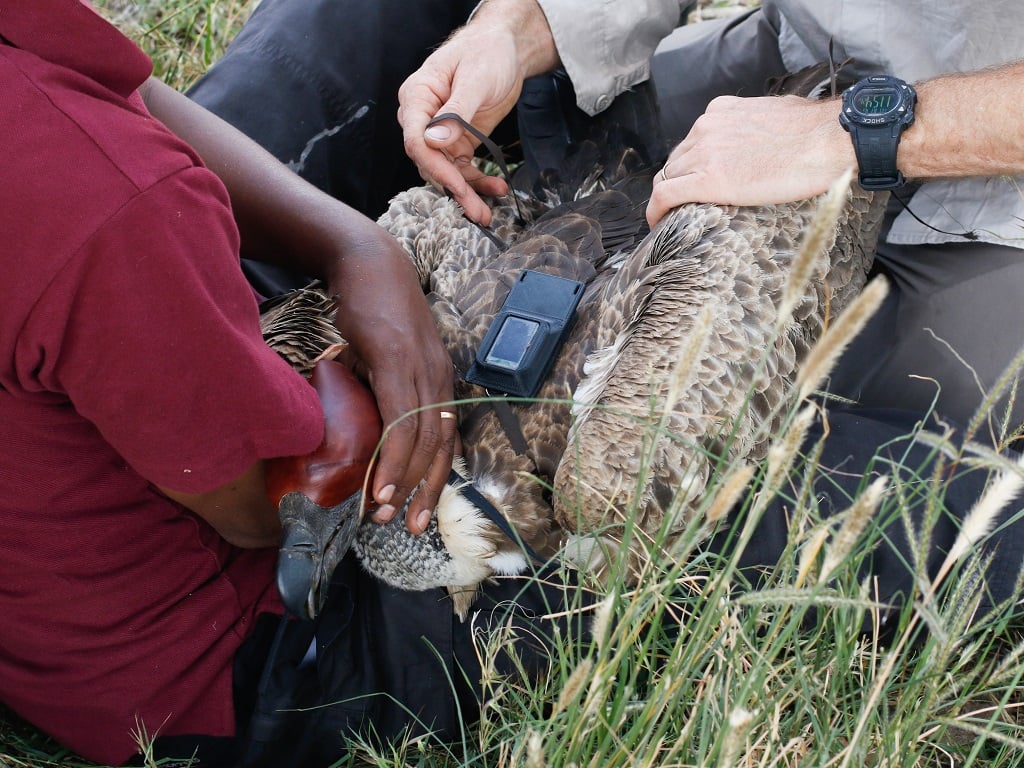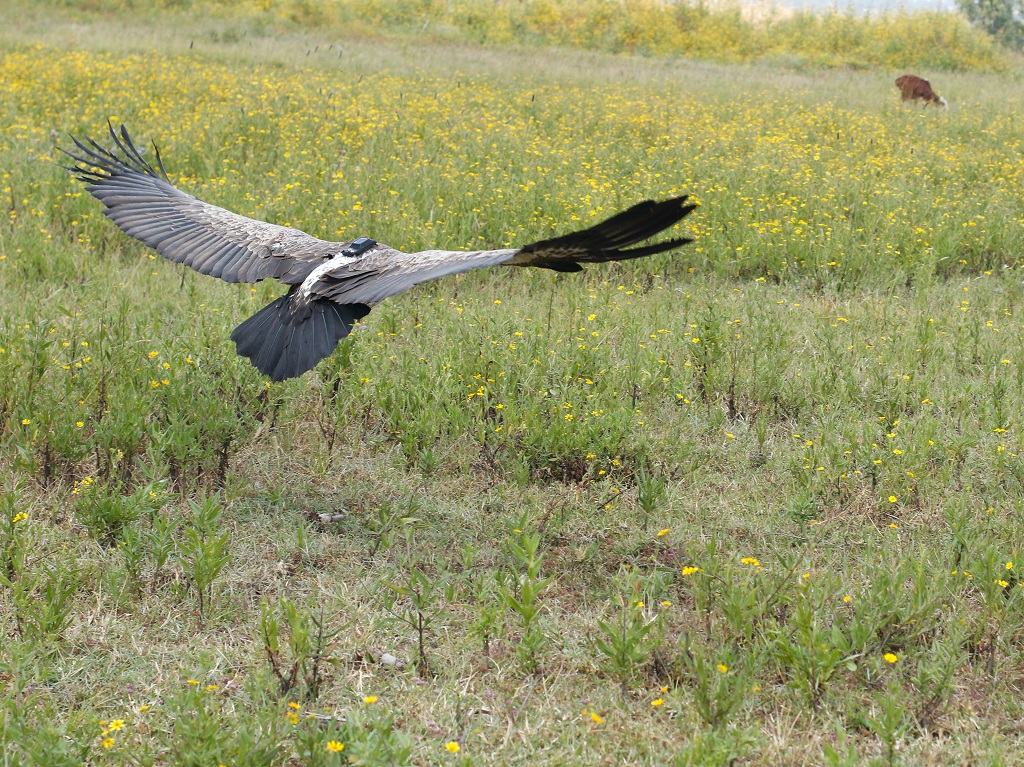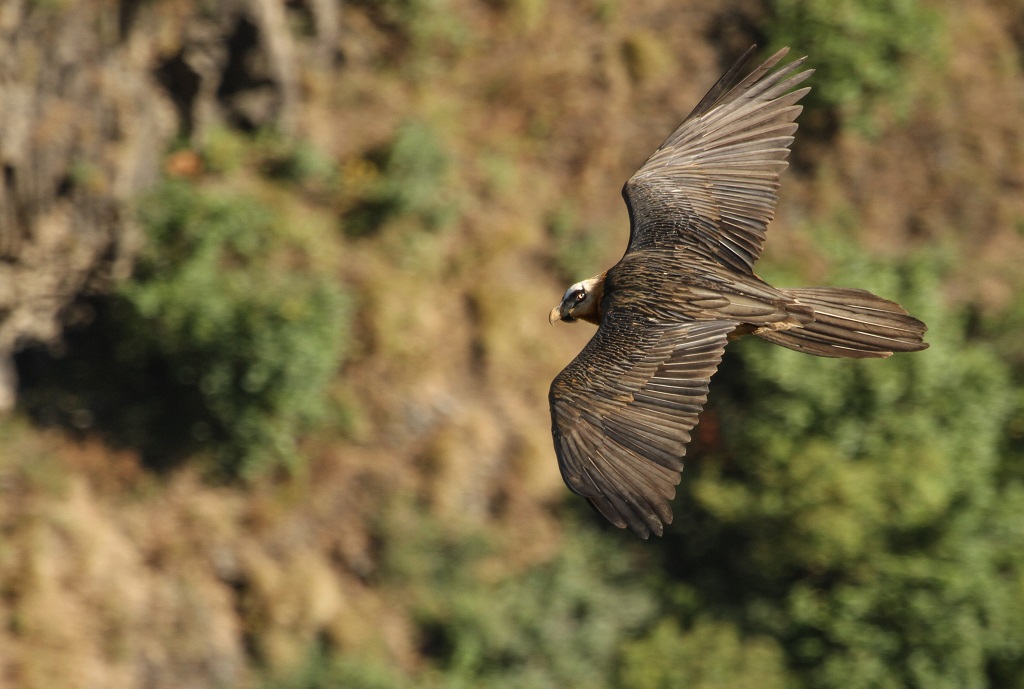![A bearded vulture flies in Ethiopia [Image: Evan Buechley / HawkWatch International]](https://fabbaloo.com/wp-content/uploads/2020/05/BeardedVulture-Ethiopia-20181020_-3_img_5eb09f574c670.jpg)
3D printed GPS housings are helping to track endangered vultures.
HawkWatch International is tuned into the seriousness of the plight of vultures. While these bald-headed birds are stereotyped as the bad guys in cartoons or thought of with distaste or dismissal, the scavengers provide great value in their ecosystems. But populations are falling dramatically, and HawkWatch wants to know why.
The organization explains:
“Vulture populations have drastically declined over the past three decades. They are now the world’s most threatened group of birds with 73% of species around the world vulnerable to extinction and 77% experiencing population declines. The situation is particularly dire in Africa where four species of vulture are listed as Critically Endangered, another three species are Endangered, and one is Near Threatened.
As scavengers that feed on dead animals, vultures provide a critical and irreplaceable ecological function by quickly consuming carrion which can otherwise become a reservoir for many pathogens, including rabies, anthrax, and mad cow disease. Vultures have unique digestive systems that kill many pathogens, thereby actively reducing the incidence of disease. However, further research quantifying the ecological consequences of vulture declines is of critical importance in order to understand the true ecological and human-health consequences if they go extinct.”
Study of the population in the Horn of Africa is being undertaken through a partnership with the University of Utah. Starting in 2013, the teams targeted Ethiopia — “a country that has the most diverse and abundant vulture community in the world” — as the primary focus for their work. In 2018, they needed a better way to track the beasts, and that’s where 3D printing comes in.
![Dr. Evan Buechley releases a newly tagged Lappet-faced Vulture in Ethiopia [Image: Neil Paprocki / HawkWatch International]](https://fabbaloo.com/wp-content/uploads/2020/05/LFVU-3798_img_5eb09f57b209f.jpg)
The 3D Printing Store, based in Colorado, has gained great experience with both 3D printing and the animal population over the years. In summer 2018, they heard from Evan Buechley, PhD, who is managing the study through a post-doctoral researcher position with the University of Utah and HawkWatch. Could 3D printing be the right solution for the devices his team needed?
“At first we were not sure what he was asking us to make but after a series of phone calls and back and forth we figured out a good design for the devices. We then had to figure out a material that would be both lightweight and strong for the application. The exact parameters were: “has to be under 3% of body weight to meet ethics standards, and has to hold up to ‘flesh tearing strength.'” Needless to say we were excited by the challenge,” The 3D Printing Store reports.
To meet the technical needs of the design, the team discovered that high-grade ABS was the right material choice, strengthened with extra walls and “nearly solid infill.” They paused the print jobs to insert metal D rings mid-print, which were then encased in ABS. Once these strong devices were completed — and up to “flesh tearing strength” — they fitted them with the GPS devices and sent them off to Buechley.
The devices met the researcher’s standards and were set for use. The Vanishing Vultures project describes plans to track 40 vultures native to Ethiopia, representing five of the country’s native seven species (two having already been tracked and studied). Trapping, tagging, and tracking eight each of the five species, each for the first time in the Horn of Africa, will show the researchers the living patterns of the vultures, including where and when they eat, roost, and nest, and how the populations come together.
In the autumn field season, the HawkWatch team captured 22 vultures, deploying 14 GPS transmitters on two Hooded, one Lappet-faced, three Ruppell’s, and eight White-backed vultures, all released safely back into the wild.
Images from HawkWatch show the devices in action, worn backpack-style: Deployment of a transmitter on a White-backed Vulture, images by Neil Paprocki / HawkWatch International:


Previous years of the study saw four additional Hooded vultures and two Egyptian vultures tagged in Ethiopia. The GPS data can be tracked in real time, and early results have already shown usable data. The field season summary explains:
“In the first month alone, this data has helped us to identify a massive colonial breeding site for Ruppell’s Vultures that is being threatened by an expanding gravel mine. In light of this finding, we have contracted our local colleagues to do regular monthly monitoring to see whether the gravel mine is impacting birds and to hopefully prevent expansion of the mine towards the cliff face. This case study shows how important such tracking data can be. We look forward to learning more about the fascinating movements and ecology of these endangered species as revealed by satellite tracking and to using this data to address threats.”
![The Vanishing Vultures crew (Alazar Daka, Neil Paprocki, and Sisay Seyfu) releases an adult Ruppell’s Vulture (Critically Endangered) back into the wild after fitting it with a satellite tracking device. [Image: Evan Buechley / HawkWatch International]](https://fabbaloo.com/wp-content/uploads/2020/05/RGVU03-Ziway-Ethiopia-20181102__img_5eb09f58f1071.jpg)
Creating 3D printed housings strong enough to endure the vultures’ often-lengthy flight patterns and rough-and-tumble living proved a good showing for The 3D Printing Store. In addition to the immediate benefits for African ecology and better understanding of nature, the project also allows for a showcase of 3D printing technology in the wild, as it were.
“We felt excited by this project because it speaks to some of the broader applications that 3D printing has all over the World. Now our 3D printed parts are really ‘taking flight’ on the backs of very important animals who are endangered. It is exciting to tell kids and visitors all over the World that 3D printing might just be right over head! These vultures can travel 1000’s of KM’s per year and they hope that this research can determine why the populations of vultures are dwindling Worldwide,” The 3D Printing Store says.
Via HawkWatch International and The 3D Printing Store











Healthcare 3D printing attempts to solve two problems that plague providing care: customization and cost.